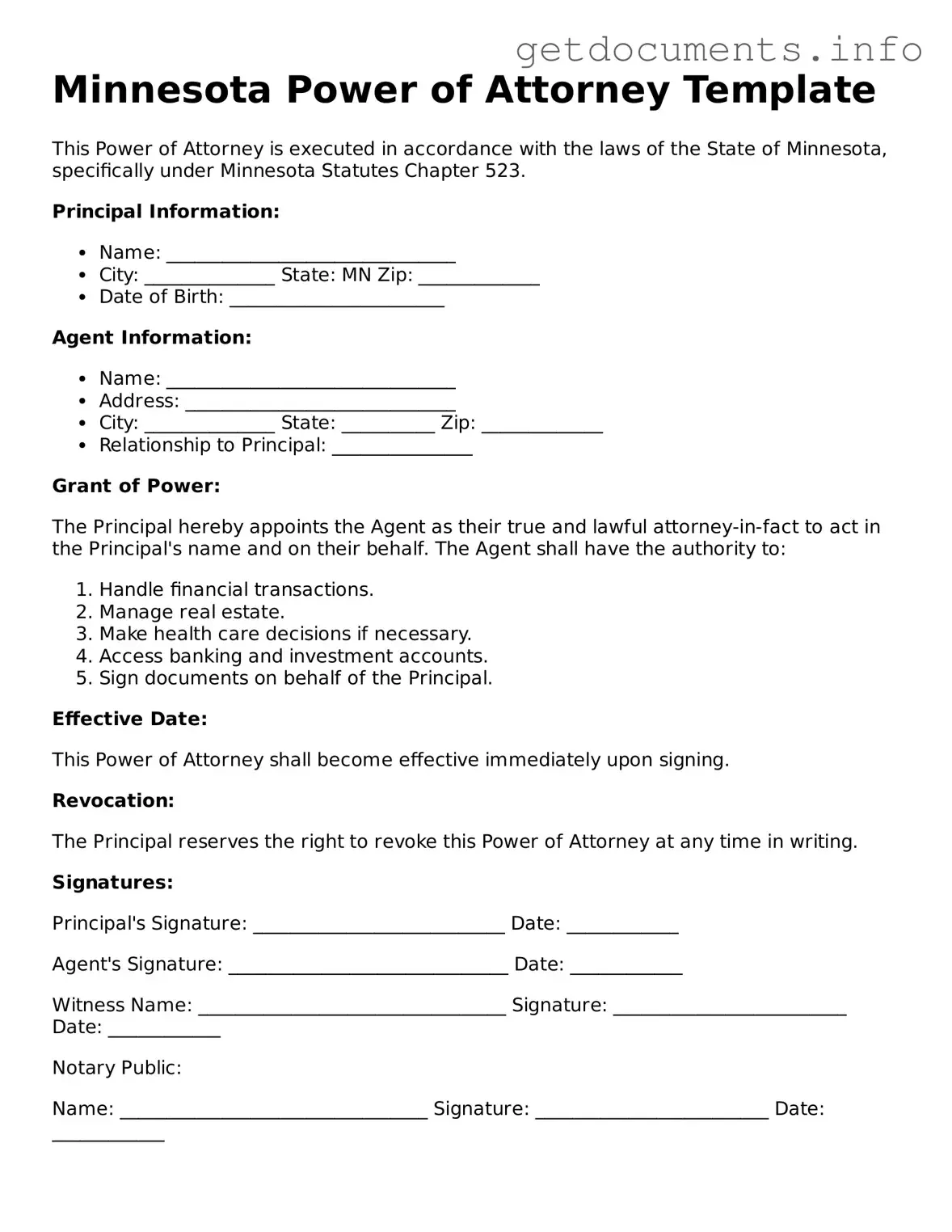The Minnesota Power of Attorney form is a crucial legal document that allows individuals to appoint someone they trust to make decisions on their behalf. This authority can cover a range of matters, including financial transactions, property management, and healthcare decisions. In Minnesota, the form can be tailored to fit specific needs, whether it’s for a limited purpose or a broader scope of authority. Importantly, the document can be effective immediately or only when the principal becomes incapacitated, depending on the preferences of the individual creating it. Understanding the rights and responsibilities of both the principal and the agent is essential, as the agent must act in the best interest of the principal. Additionally, the form must be signed and notarized to ensure its validity, making it essential for individuals to follow proper procedures. Overall, the Minnesota Power of Attorney form serves as a vital tool for planning ahead and ensuring that personal and financial affairs are managed according to one’s wishes, even in times of uncertainty.
